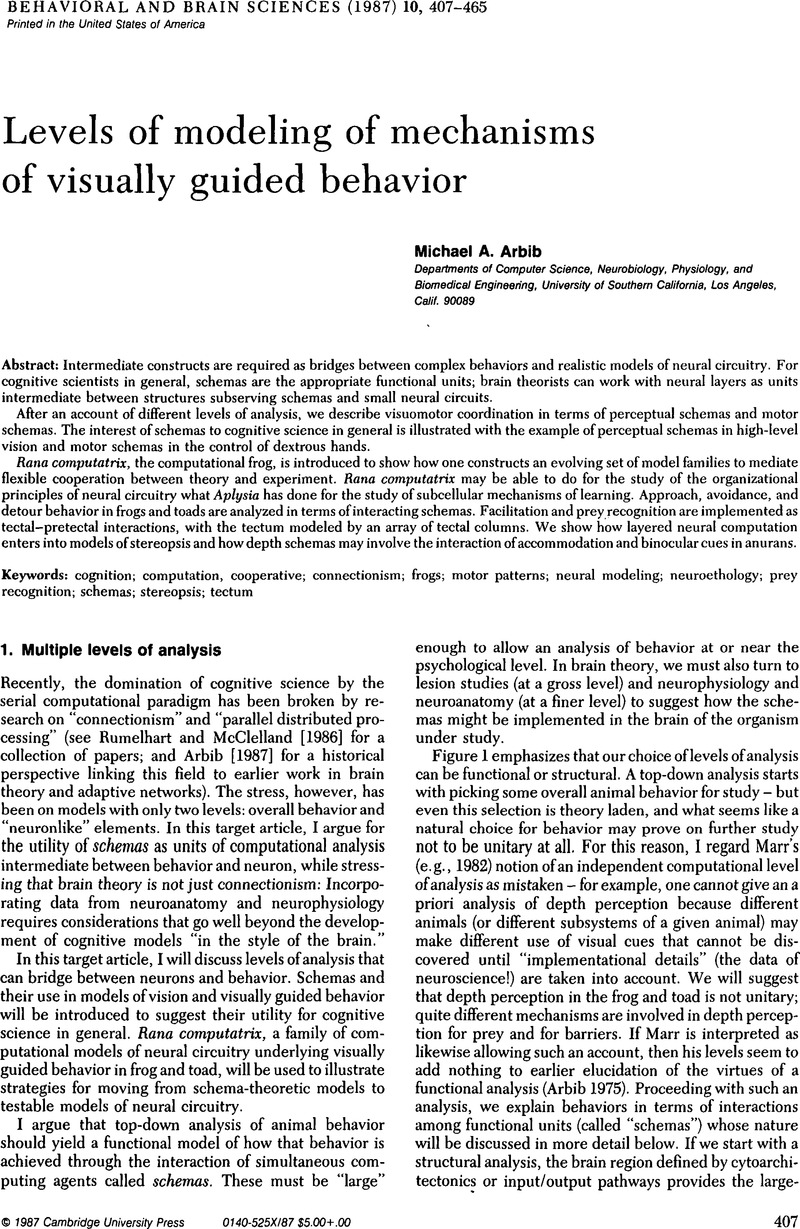Collett, T. &
Udin, S. (
1983) The role of the toad's nucleus isthmi in preycatching behaviour.
Proceedings of second workshop on visuomotor coordination in frog and toad: Models and experiments, ed.
Lara, R. &
Arbib, M. A.. COINS-Technical Report 83-19,
University of Massachusetts at Amherst. [aMAA]
Google Scholar 